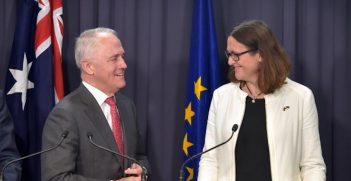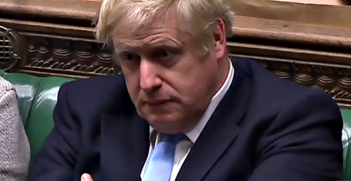Innovation Matters to the European Union and Australia

Both the European Union and Australia have made strides to promote science and innovation.
In 2011, the European Union proclaimed itself to be the “Innovation Union”, while Australia announced itself as “powering ideas” in 2009, before adopting a new National Innovation and Science Agenda (NISA) in December 2015.
In the 2014-2020 financial period, the EU has committed €80 billion to Horizon 2020, in order to promote excellent science, new technologies, responses to societal challenges, and closer collaboration between science and industry. Australia has established a new agency, Innovation and Science Australia (ISA), to improve performance on innovation significantly.
Both the EU and Australia are recognised widely for the quality of their science; however, taking this intellectual resource and linking it effectively with industry has been a serious problem, especially in comparison with nations such as the United States and Japan. Australians have become aware painfully of our low ranking amongst the Organisation for Economic Cooperation and Development (OECD) member states for business-university collaboration. Similarly, in the mid-2000s, even before the financial crisis, business investment in research and development in the EU was 30 per cent less than that in the United States.
The EU Commissioner for Research responded to this situation by convening a group of economists to advise on an approach to ensure that knowledge became a critical resource for growth. However, the agenda quickly became much larger, revealing a more complex agenda: much more than improving general conditions for R&D and innovation, it became a question of how to structure a policy response to urgent and global challenges. Only an effective and efficient system of research and innovation would allow Europe to successfully respond to the broad range of global challenges, not only economic but also social and environmental. The seriousness of these challenges would require stronger collaboration. Hence for 2014-20, research and innovation funding was consolidated as Horizon 2020, the largest public funding program in the world, with a new emphasis on university-industry partnerships.
A similar theme emerged in Australia. In 2016, when ISA was formed with a Board comprising entrepreneurs, investors, researchers and educators. They initiated a wide-ranging consultation and in 2017, published Australia 2030: Prosperity through Innovation. This report promoted action in five areas: Education, delivering relevant skills; Industry, through high-growth firms and increased productivity; Government through digital service delivery; Research, through improved commercialisation; and Culture, launching national Missions.
In the EU, the initial work of the science-business group extended quickly into collaboration with the OECD. A new policy framework was developed in order to focus European regional authorities on processes for increasing research and development activity, reducing fragmented initiatives across the EU, and promoting regional innovation systems. The EU-OECD working party examined both the European experience of place-based innovation systems and the evolving character of Global Value Chains (GVCs) with the conclusion that EU regional structural fund investments needed to be focused on applications by regional businesses of those knowledge assets within a region that had potential to be successful in global markets.
Hence, since 2014, it has been an ex ante conditionality that a Smart Specialisation Strategy must be adopted by the relevant regional authority in order for a region to qualify for the structural innovation component of the European Regional Development Fund. An extensive program of support was implemented through the Smart Specialisation Platform in the Joint Research Centre, and approximately 170 regional and national Regional Innovation Smart Specialisation Strategies (RIS3) have been developed.
”Smart specialisation” asks regions to analyse their core assets, specifically those in which they have a comparative advantage, and seek new market opportunities which result from the more dispersed and flexible global value chains. In other words, place-based innovation becomes shaped by the emerging global opportunities. Focusing regional natural and knowledge assets (scientific and technological, as well as applied) on emerging global niche markets (specialised “diversification”) is a key objective of the EU’s smart specialisation process. This is an engaged planning process which promotes innovation as a collaborative, dynamic and iterative, problem solving process which must be focused on global context.
The Australian Government is beginning to explore the value of place-based innovation systems. In doing so, it can draw on the experience of regions that have adopted smart specialisation already. The Hunter Valley was the first, launching its Strategy with the Prime Minister in March 2016. The Latrobe Valley Authority has implemented Smart Specialisation a little differently, initially exploring the food and energy sectors as a basis for understanding and building a place-based innovation system for Gippsland. It is the first Australian region to register with the S3 Platform.
The Australian Government approach continues to evolve, which invites some consideration of a policy framework for the development of regional innovation systems. Is this an opportunity for Australia? Can it learn from the investment which the EU has made in place-based innovation systems?
Professor Bruce Wilson is Director of the European Union Centre at RMIT University.
This article was originally published in The EU and Australia: Towards a New Era, the official publication of the EU-Australia Leadership Forum 2018, which took place from 18-22 November. It is republished with permission.
The AIIA is part of the international consortium selected to deliver the EU-Australia Leadership Forum project, a three-year initiative funded by the EU. Click here for video highlights of the forum.





